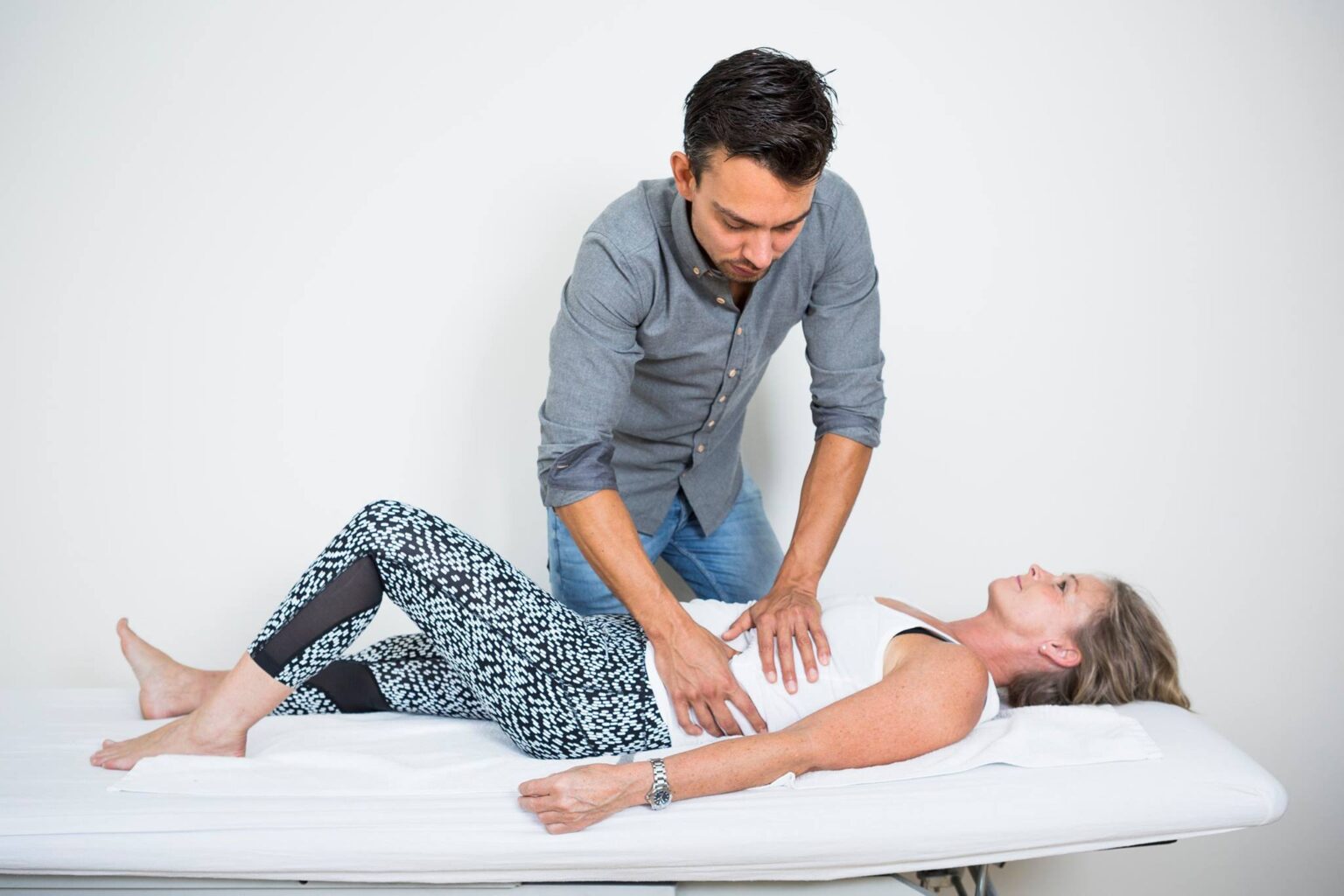We treat
Pelvic pain
Learn more about pelvic pain on this subpage.
Pelvic pain
Women suffering from pelvic pain are estimated to account for up to 2% of all visits to their GP. The most common causes of pelvic pain are pelvic inflammatory disease (cystitis, appendicitis, inflammation of the bladder, uterus and rectum), pain related to menstruation (cyclical pain), ectopic pregnancy or miscarriage, incontinence, vaginal tension, coccyx pain, kidney stones, anal tension, endometriosis, pelvic muscle tension or uterine fibroids. The pain can be constant or intermittent.
Jump to section [Vis]
Symptoms of pelvic pain
Pelvic pain can be divided into acute, chronic pain or pain that occurs in connection with menstruation. Chronic pain can often be experienced as heaviness and fatigue in the lower abdomen, a burning or stinging sensation, the pain can be triggered deep inside the vagina during intercourse, pain in the anus during defecation, pain during constipation, lower back pain, neck pain, the pain can also radiate down one or both legs.
Bladder inflammation (cystitis)
This inflammatory condition is the most common inflammatory condition in the lower abdomen.
50% of all women will get cystitis at some point in their lives.
Cystitis occurs when bacteria from the rectum or bacteria from poor hygiene enter the urethra. Many people have dysfunction in the urethra itself, i.e. a shortening of the urethra. Cystitis can also occur due to poor immunity, problems with mucous membranes, etc.
Symptoms of cystitis
Symptoms may include; frequent urination, painful urination, blood in the urine, burning during urination, back pain, neck pain, heaviness and discomfort in the lower abdomen.

Appendicitis
Appendicitis is a condition where the junction between the small intestine and the large intestine has become blocked, causing the area itself to become inflamed and swollen. In the junction is an important sphincter muscle, whose function is to open and close when food is to pass through. This muscle is controlled by the autonomic nervous system. Disorders in this can cause the tension in the muscle to become too great, which increases the chance of inflammation. Bad conditions can end in peritonitis, which is life-threatening.
Many appendectomy operations are performed each year. The incidence of appendicitis is highest between the ages of 8 and 22.
Consequences of appendicitis
The appendix has an important function for the body’s immune system, which is why resistance to bacteria, viruses, etc. becomes worse. The appendix is located on the right side of the abdominal cavity, in front of the hip flexor. The hip flexor and the appendix are interconnected via mucous membranes and connective tissue. Scar tissue after appendectomy can and will interfere with the mobility of the hip flexor, which can cause back pain, hip and knee injuries.
Scar tissue in the digestive system can also contribute to upset stomach, constipation, digestive problems, bloating, infertility, etc.
Menstrual problems / Menstrual pain (cyclical pain – dysmenorrhea)
Pain during menstruation can be caused by structural factors such as myoma, scar tissue, endometriosis and other forms of fibroids, but it can also be caused by more functional factors such as hormonal problems, portal hypertension (increased pressure in the venous system), stress and adhesions between the uterus and the bladder and rectum, etc.
Symptoms of menstrual pain
Back pain, pelvic pain, heavy bleeding, spotting, constipation, bloating, heaviness and fatigue in the lower abdomen, migraines/headaches, neck pain are typical symptoms of menstrual problems.

Endometriosis
Endometriosis is endometrial tissue (tissue that is located in the cavity of the uterus) that has grown in the uterine muscle or completely outside the uterus (ovaries, bladder, peritoneum and intestine). Endometriosis is especially found between the rectum and vagina (Douglas pouch). Endometriosis is a syndrome that is often developing, that is, a syndrome that grows and spreads in the lower abdomen, not very different from cancer (however, endometriosis has nothing to do with cancer).
It is estimated that up to 20% of all women have endometriosis. The condition is often hereditary and symptoms of endometriosis often appear between the ages of 30-45.
Symptoms of endometriosis
The pain can vary depending on where the endometrial tissue is located. The pain can often be experienced as sharp stabbing pains in the lower abdomen, deep constant pain during periods, heaviness in the lower abdomen and radiating pain down the legs to the groin or pubic bone. Symptoms and pain related to urination, defecation, constipation and intercourse may also occur. The symptoms are often dependent on the state of the nervous system, i.e. stress, busyness and psychological stress can often worsen the pain associated with endometriosis.
Incontinence
Incontinence or urinary incontinence is a condition in which a person has difficulty holding in water or leaks urine. Urinary incontinence can be divided into several types, but stress incontinence, urge incontinence or a combination of the two are the typical ones. Many suffer from urinary incontinence. This condition is often embarrassing and a difficult topic to talk about. Up to 75% of those who suffer from stress incontinence hesitate to visit their doctor.
Tailbone pain (coccygodynia)
Tailbone pain is the term for pain in or around the tailbone. This includes pain or discomfort in the tailbone itself, between the tailbone and the sacrum, ligaments in the area, or muscles in the pelvis (pelvic floor, etc.).
Symptoms of tailbone pain
Pain is often experienced in a sitting position, pain when pressure or touching the tailbone, pain when doing abdominal press (going to the toilet or coughing), pain radiating up to the back or down into the buttocks, back and neck pain and headaches.
Causes of tailbone pain
The causes can vary. Falling on the tailbone or difficult childbirth are often causes of tailbone pain. Tight and tense pelvic floor, epidural, neck and back pain are also common causes. Other causes such as bladder, uterine and/or rectal problems can also lead to tailbone discomfort.
Pain and tenderness can be felt directly by pressure on the tailbone, or at the joint between the tailbone and sacrum, which can also be hypermobile. The ligaments that originate from the sacrum can be very tender. Pain is often felt during prolonged sitting, when rising from a sitting position, when bending forward or walking.

Treatment of abdominal pain
Causes of lower abdominal pain must always be determined first. The causes can lie in several systems in the body; musculoskeletal system (muscles, tendons, joints, etc.), blood system, organ system, hormonal system, craniosacral system, etc. Osteonordic are experts in finding and treating causes of pelvic pain in all systems in the body.
Gynecological treatment
Scar tissue often forms after abdominal surgeries (removal of the uterus, removal of fibroids and endometriosis, peritonitis and appendicitis), which limits the mobility and function of the organs in the abdomen.
Here, Osteonordic’s experts can use internal gynecological treatments with the aim of restoring the mobility and function of connective tissue and organs in the pelvis.
After a bad fall/trauma to the tailbone (crooked tailbone, bent tailbone), in case of incontinence, endometriosis, chronic urinary tract infections or in case of involuntary infertility, gynecological treatment may be considered. Osteonordic has physiotherapists specializing in gynecology.

Often related pain

Ovarian surgery
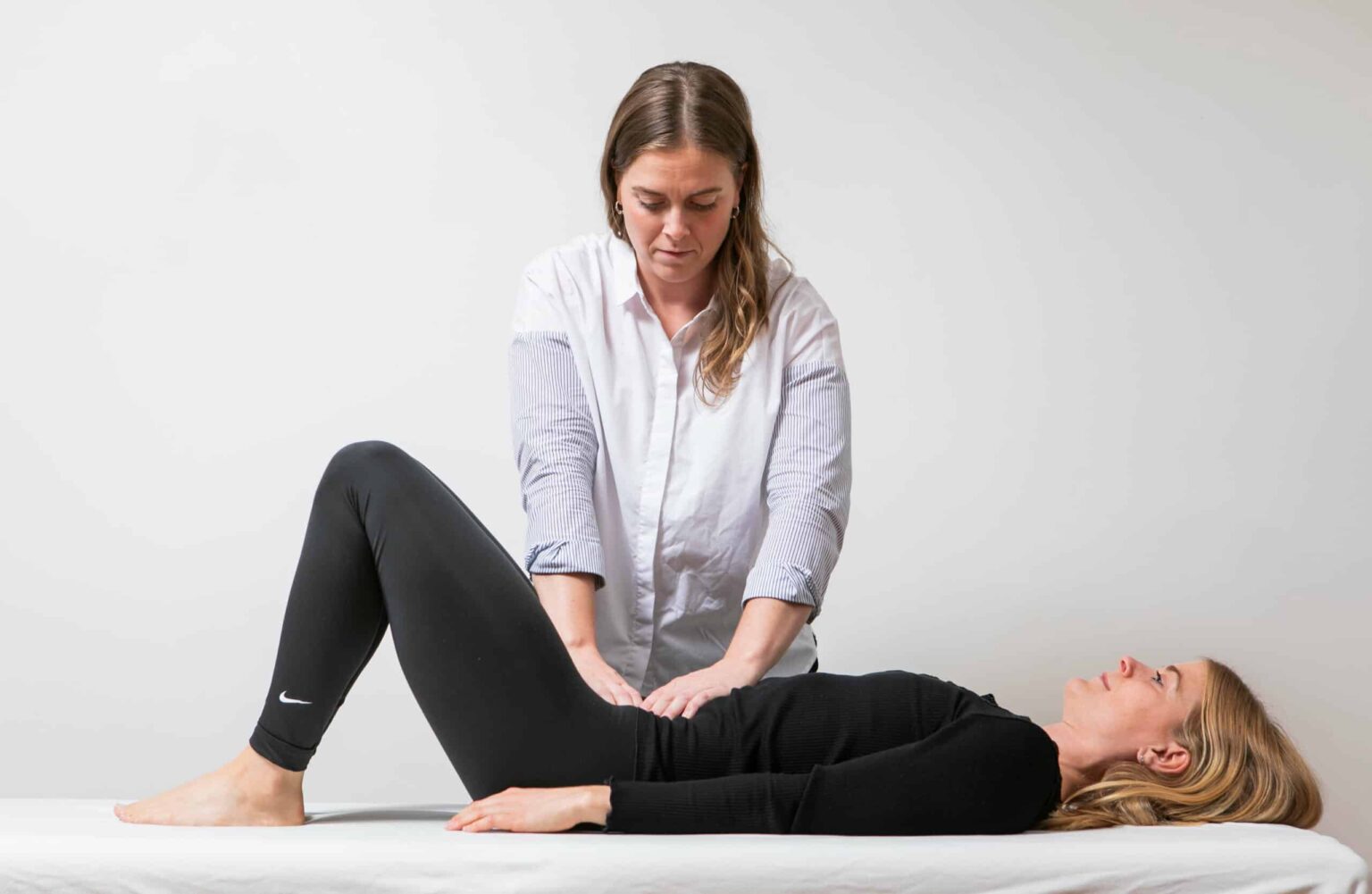
Hysterectomy
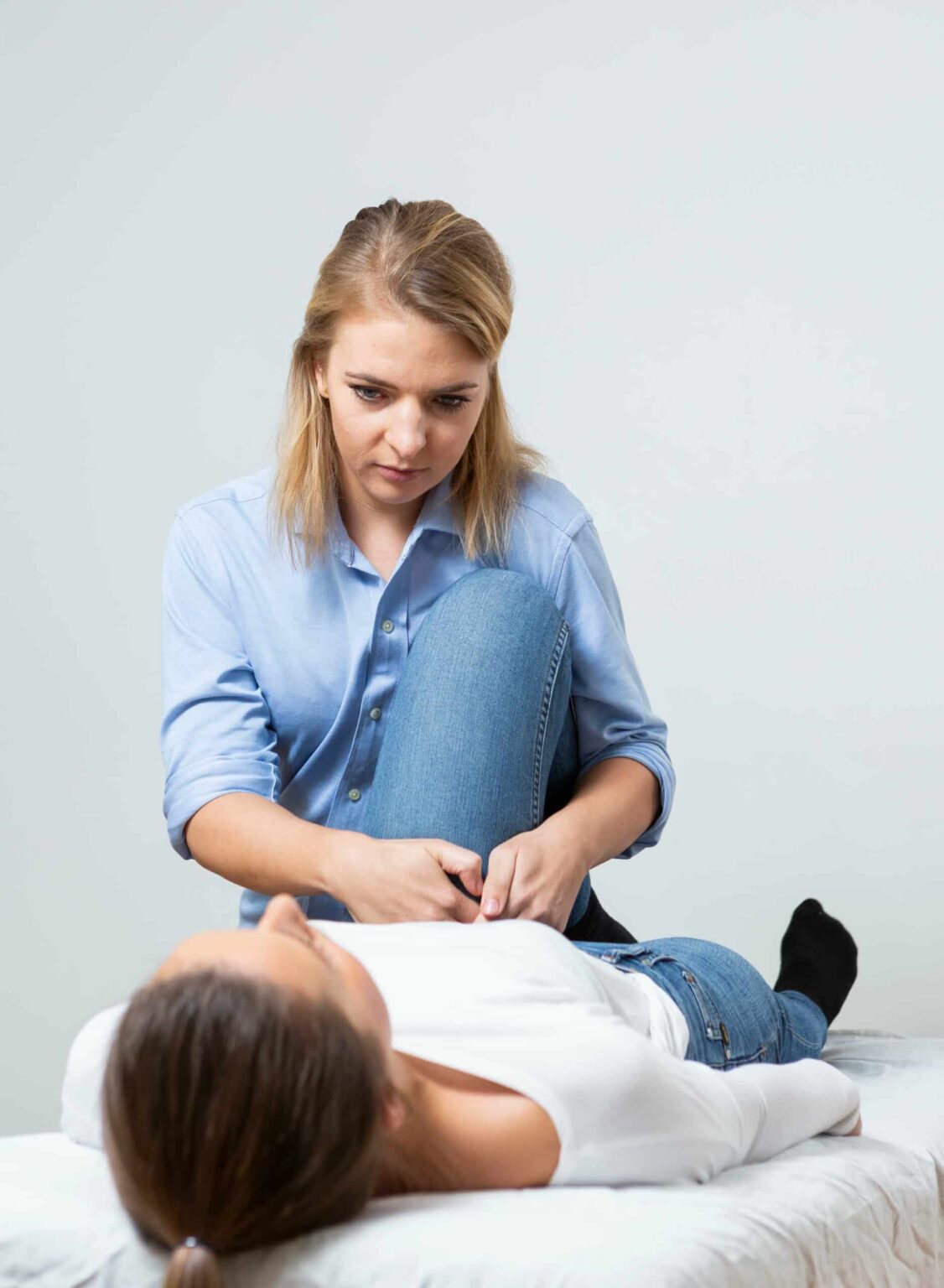
Endometriosis
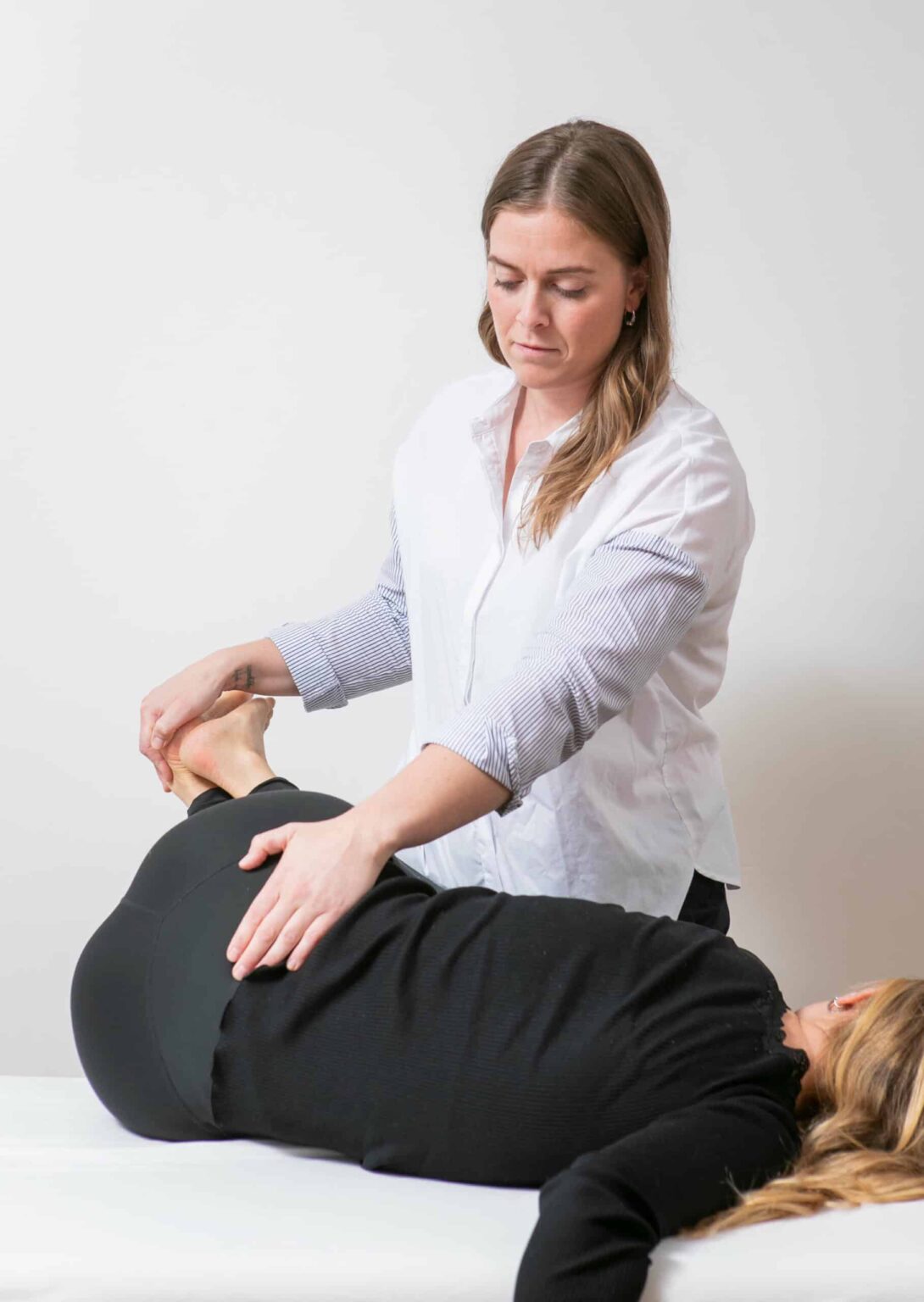
Pelvic pain
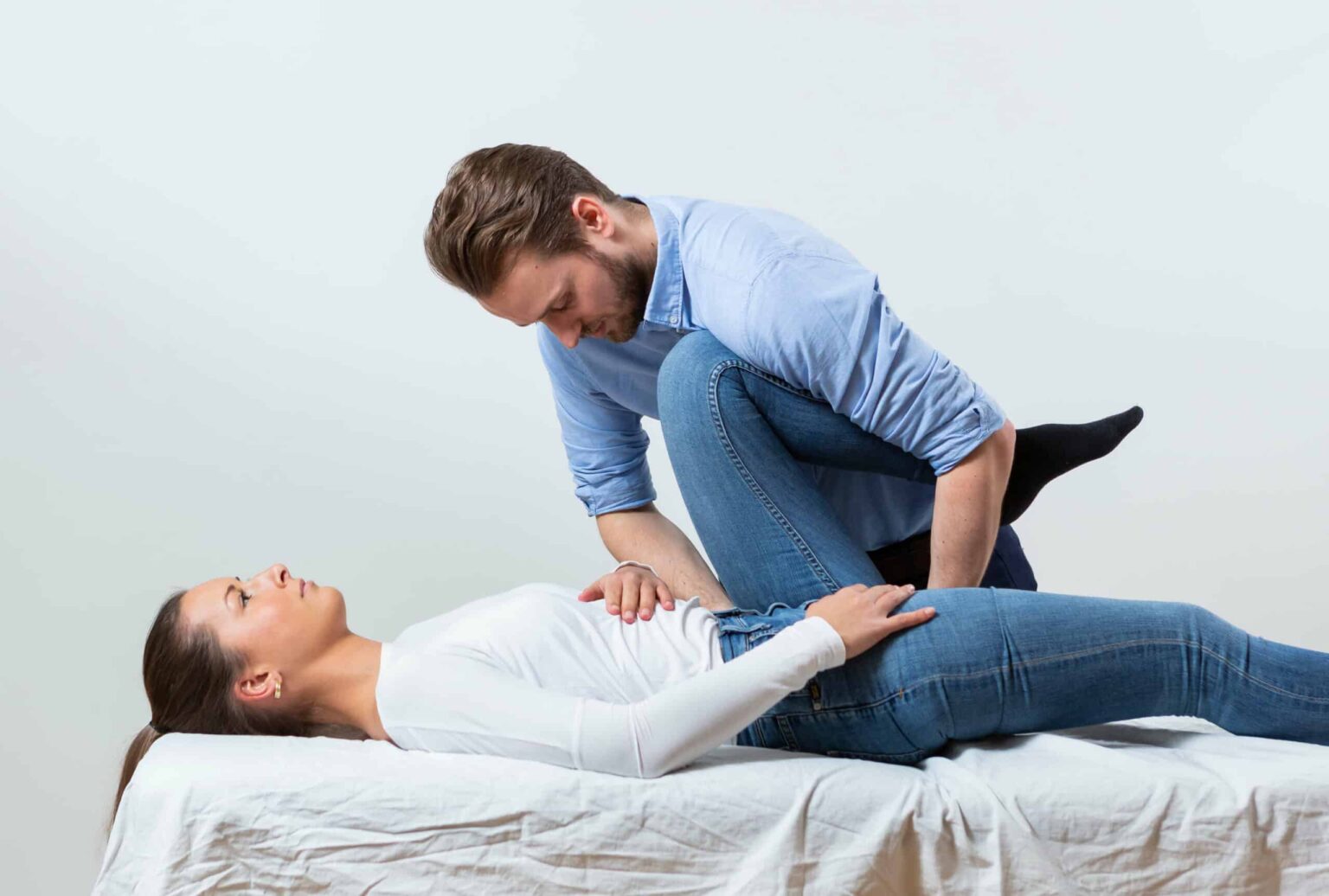
Menstrual pain
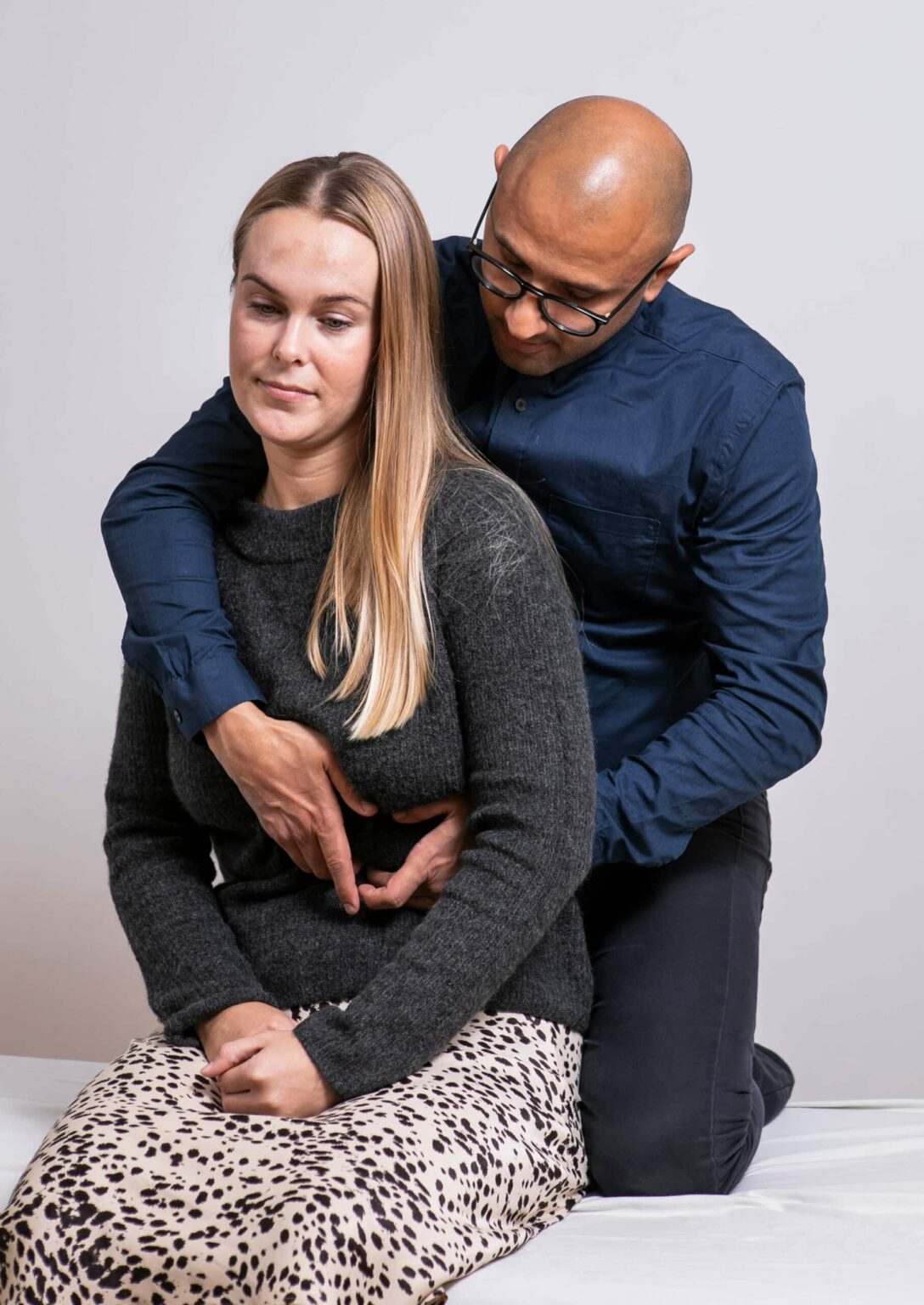
PMS
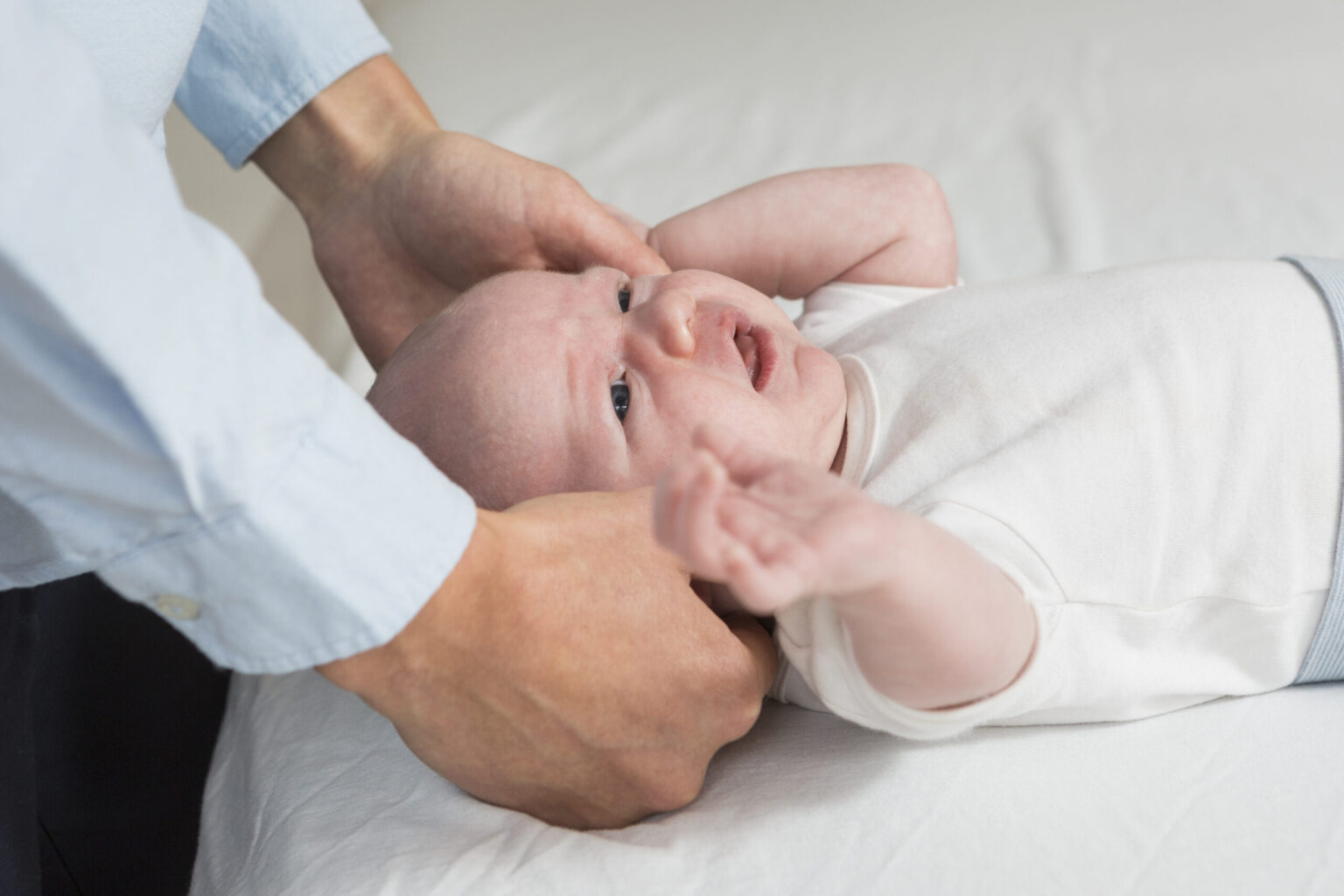
Involuntary infertility
